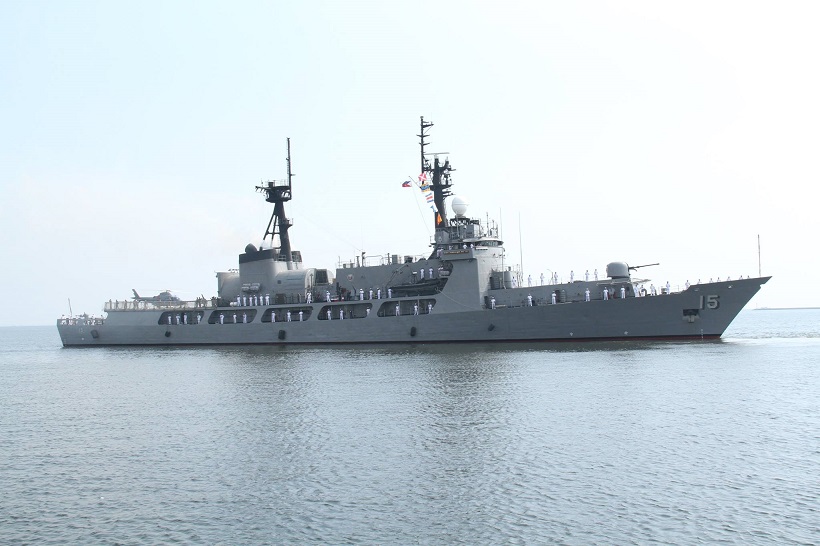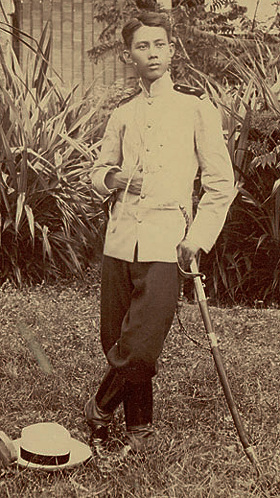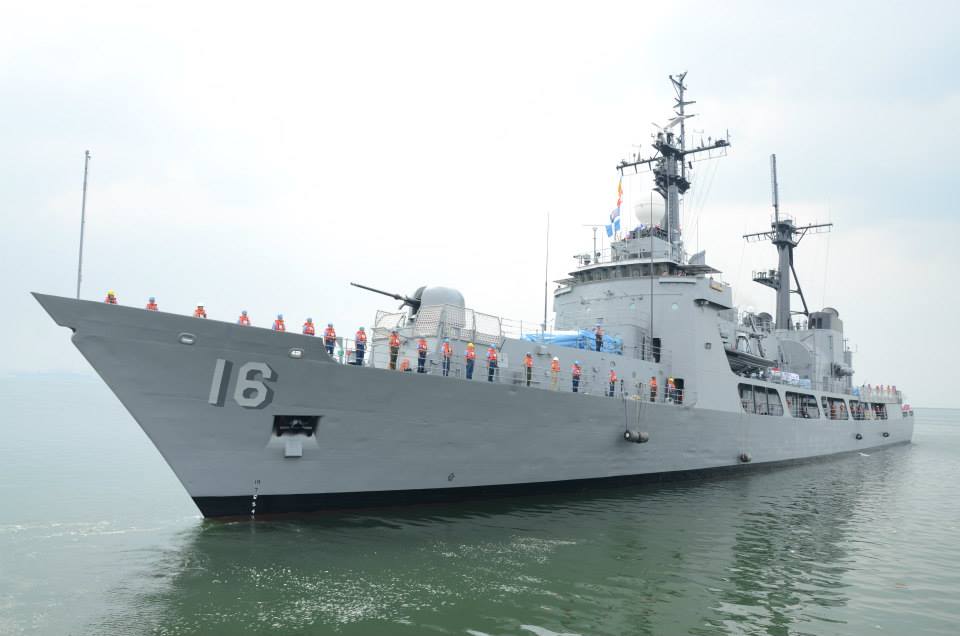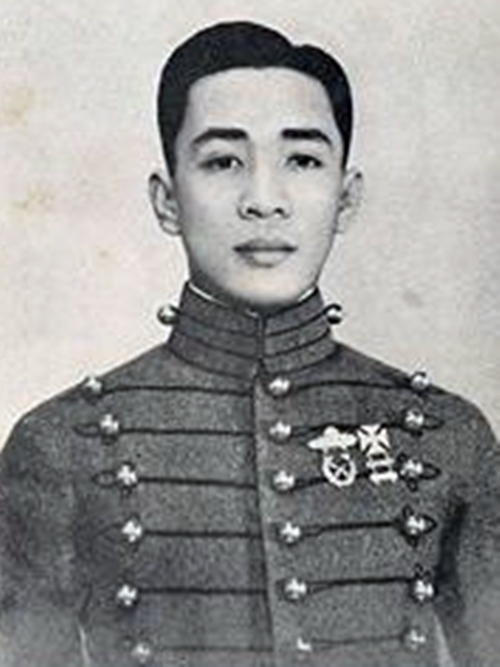The Philippines has been beefing up its military significantly amid tensions with China’s aggressive maritime expansion in the South China Sea. In 2015, former President Benigno Simeon Cojuangco Aquino III signed Republic Act No. 10349 or the new AFP Modernization Act (Armed Forces of the Philippines), which sets the country on track for a 15-year military modernization effort and upgrade.
As a Bulakenyo, I feel very proud of having two P.H. Navy ships named after great heroes from Bulacan. These P.H. Navy ships are used for patrolling and defending our sovereignty within the Philippines ‘ Exclusive Economic Zones (EEZ) and territorial seas, including the West Philippine Sea.
Read 7th Week Report: COVID-19 in Bulacan – West PH Sea Diplomatic Protests
PH Navy Ships named after Bulakenyos
The names of commissioned P.H. Navy ships are prefixed with the letters “BRP” or Barko ng Republika ng Pilipinas (Ship of the Republic of the Philippines).
BRP Gregorio del Pilar (PS-15)

BRP Gregorio del Pilar (PS-15) is named after General Gregorio del Pilar of Bulakan. This is currently the flagship or the largest vessel of the Philippine Navy.
The BRP Gregorio del Pilar was first used in 1967 as the Hamilton, the first 378-foot high endurance ship, Secretary Class (named after former U.S. Treasury Secretary) ship. It was mainly built as a patrol ship for long-distance and middle-ocean operations. These types were the largest ships in the USCG inventory for decades until Polar Class ships were created.
This P.H. navy ship has a flight deck capable of landing a helicopter and a retractable hangar. These were introduced to the U.S. inventory Coast Guard in the 1960s. Through the Fleet Rehabilitation and Modernization (FRAM) program (1980’s to 1992), vehicles have been modernized, replacing their original 5-inch (127 mm) guns with more modern 3-inch (76 mm) ) weapons.
The Philippines formally purchased this P.H. Navy ship on May 13. This was the first military ship purchased by the Aquino administration using the United States’ Excess Defense Article (EDA) program. BRP Gregorio del Pilar had been renovated and repainted in gray, the color of the Philippine Navy.
Due to the Foreign Assistance Act of 1961 and the Arms Export Control Act of 1976, the EDA allows military equipment declared “excessive” by the United States Military Department to be donated to its allies to assist in their modernization. Through the EDA, the Philippine Navy obtained the Hamilton cutter and paid P450 million for its shipment from U.S. inventory towards Philippine inventory.
General Gregorio del Pilar (Bulakan)

On November 14, 1875, one of the Philippines’ youngest generals during the Philippine Revolutionary and Philippine-American War, Gregorio Hilario del Pilar y Sempio, was born in San Jose, Bulacan, Bulacan. He was known as the “Boy General” for his heroic performance in battle, including the Battle of Kakarong de Sili in Pandi, the battle / Raid in Paombong, battle in Quingua (now Plaridel), and the Battle of Tirad Pass, where he died.
Del Pilar is remembered as the “Hero of Tirad Pass.” In this historic place, the young general fought and held back the strong invading Americans with only a handful of men, thus giving Aguinaldo ample time to escape the conquerors. It was a one-sided battle, but Gregorio del Pilar fought bravely. He fought bravely and with outstanding leadership and heroism. On that fateful day of December 2, 1899, he was shot and killed at Tirad Pass near Cervantes, Ilocos Sur.
BRP Ramon Alcaraz (PS-16)

BRP Ramon Alcaraz (PS-16) is the second P.H. Navy ship of the BRP Gregorio del Pilar-class offshore patrol vessels of the Philippine Navy. She is named after Commodore Ramon Alcaraz, a Filipino Naval officer, and a World War II hero. Commodore Alcaraz was best known for receiving a Silver Star for heroism and gallantry during World War II.
From 1968 to 2012, she was known as USCGC Dallas and served the United States Coast Guard as a high endurance cutter. On March 30, 2012, she was decommissioned and acquired by the Philippines under the Excess Defense Articles and the Foreign Assistance Act.
According to the official gazette, “During the 70th anniversary of the Fall of Corregidor on May 6, 2012, President Benigno S. Aquino III announced that the forthcoming acquisition of a second Hamilton Class Cutter would be named after Commodore Alcaraz: the first time that a P.H. navy ship had been named after a naval hero.”
Commodore Ramon A. Alcaraz (Plaridel)

Commodore Ramon Abacan Alcaraz, or “Monching” to close friends, was born on August 31, 1915, in Quingua (known today as Plaridel), Bulacan. He entered the Philippine Military Academy’s pioneer cadetship program on June 15, 1936, and received his commission as a 3rd Lieutenant on March 15, 1940. A year and a half after the PMA, he had been integrated into the U.S. Army Forces Far East (USAFFE), and assigned to the newly created Offshore Patrol (OSP) of the Philippine Army.
On December 29, 1936, President Manuel Quezon signed the law renaming the town of Quingua to ‘Plaridel,‘ in honor of the great hero of Bulacan, Marcelo H. del Pilar.
Read: Interesting Trivia for Today: Etymology of Bulacan and its 24 Towns and Cities
Then Commonwealth and Philippine President Manuel L. Quezon contracted the acquisition of 36 units of fast motor torpedo boats of British design as part of the Philippines’ offshore defense amidst the growing fears over an expansionist imperial Japan. The OSP was formally organized on February 9, 1939, with headquarters at the Muelle del Codo at the Port Area in Manila under 1st Lieutenant Jose V. Andrada’s command.
The OSP, the forerunner of the Philippine Navy, was assigned with three units of U.S. Navy motor torpedo boats or Q-Boats (Quezon-boats); Q-111 “Luzon,” Q-113 “Agusan” and Q-112 “Abra.” Alcaraz captained Q-112 Abra.
Upon the war outbreak, as commander of the Q-112 Abra, then boat Captain Alcaraz shot down three Japanese dive bombers zigzagging at the straight between Bataan and Corregidor Island. Alcaraz and the Abra crew’s initiative stopped the Japanese from completing their objectives. Gen. Douglas McArthur promoted Alcaraz on the spot in January 1942 at Corregidor for heroism and gallantry in action.
Alcaraz was later captured by the Japanese and imprisoned at the Malolos, Bulacan Prisoner of War camp. Ka Monching was released by the Japanese on August 10, 1942, after undergoing months of intensive “rejuvenation program.” To join the Bureau of Constabulary, he was paroled and instructed to be re-trained at the Torres High School in Gagalangin, Tondo.
Graduating in September 1942 as a commissioned police officer, Alcaraz was told that his first assignment was Lanao del Norte. He faked a malaria illness resulting in his confinement at San Lazaro. Ka Monching missed the boat to Mindanao and was later re-assigned to Bayombong, Nueva Vizcaya.
In the Sierra Madre mountains, he would clandestinely meet with guerrilla leaders under the command of Lt. Col. Manuel Enriquez. Though a middle-ranking officer of the police reporting directly to high-ranking officials of the Japanese kempetai, Alcaraz was clandestinely forming his informants’ network against the occupying forces.
Throughout the occupation period, Ka Monching gave the Japanese forces a false sense of security, gathering information and informing USAFFE Headquarters in exile up to the right time to fight came to light in the Philippines’ liberation in 1944.
Alcaraz would continue to serve the defense establishment even after the war. Upon instructions of then-Defense Secretary Ramon Magsaysay, Commodore Alcaraz was instructed to study the United States Marine Corps organization.
He later used this learning experience to designate Philippine Navy personnel to form the First Marine Company under his Q-Boat Executive Officer, Lt. Cdr. Manuel Gomez. The company would be based at the Marine Station at Port Area, Manila, and eventually grow, becoming the present-day Philippine Marine Corps.
The Commodore last served as head of the Naval Operating Forces until his retirement on January 22, 1966. Alcaraz received multiple decorations in the course of his service in the Armed Forces. The awards and decorations include a Gold Cross, the U.S. Silver Star, Philippine and American Defense Medals, World War II Victory Medal, Philippine Independence medal, and others.
When Martial Law was declared, the Commodore was arrested by the Presidential Security Command on November 15, 1972, and was brought to the PSC headquarters for interrogation. After his release, he decided to escape to the United States with his daughter, fearing persecution from Marcos’ tyrant regime. During his stay in the U.S., he continued to oppose the Marcos dictatorship by joining organizations against the Philippines’ administration. While there, he also fought for Filipino veteran soldiers’ rights and benefits who fought alongside U.S. forces in World War II.
Ka Monching’s last battle was the Filipino Veterans Equity Bill’s passage, which finally became law as the American Recovery and Reinvestment Act of 2009 on February 17, 2009. The act appropriated a total of US$198 million authorizing the U.S. Department of Veterans Affairs to release a one-time, lump-sum payment to eligible World War II (WWII) Philippine veterans
On June 25, 2009, Ka Monching peacefully passed away at 94 at his home in Orange County in California.
Sources
- Cmdre. Ramon A. Alcaraz, PN. (2020, August 05). Retrieved December 03, 2020, from https://www.geni.com/people/Cmdre-Ramon-A-Alcaraz-PN/6000000025003261453
- Briefer on Ramon Alcaraz: GOVPH. (2013, August 06). Retrieved December 02, 2020, from https://www.officialgazette.gov.ph/2013/08/06/briefer-on-ramon-alcaraz/
- Philippine Navy BRP Ramon Alcaraz to undergo sea trials after repairs. (2020, September 08). Retrieved December 03, 2020, from https://www.navyrecognition.com/index.php/news/defence-news/2020/september/8955-philippine-navy-brp-ramon-alcaraz-to-undergo-sea-trials-after-repairs.html
- BRP Ramon Alcaraz (PS-16). (2020, December 02). Retrieved December 03, 2020, from https://en.wikipedia.org/wiki/BRP_Ramon_Alcaraz_(PS-16)
- About Ramon A. Alcaraz. (2018, May 18). Retrieved December 03, 2020, from https://philippinediaryproject.com/about-the-philippine-diary-project/about-the-diaries/about-ramon-a-alcaraz/
- Admin, P. (n.d.). GOVPH. Retrieved December 03, 2020, from https://honolulupcg.dfa.gov.ph/consulate-news/470-brp-ramon-alcaraz-departs-hawaii-amid-warm-aloha-wishes
- Ernie D.Delfin. (2000, March 19). A Pinoy war hero in America – A Voice From America. Philstar.Com. https://www.philstar.com/opinion/2000/03/19/103243/pinoy-war-hero-america-voice-america
- Rodriguez, E. O. (1986). Commodore Alcaraz: First victim of President Marcos (1st ed.). Vantage Press.
- Republic Act No. 10349: GOVPH. (2012, December 11). Retrieved December 03, 2020, from https://www.officialgazette.gov.ph/2012/12/11/republic-act-no-10349/
- Ang BRP Gregorio del Pilar: GOVPH. (n.d.). Retrieved December 03, 2020, from https://www.officialgazette.gov.ph/featured/ang-brp-gregorio-del-pilar/
- Briefer on the BRP Gregorio del Pilar: GOVPH. (2011, August 23). Retrieved December 03, 2020, from https://www.officialgazette.gov.ph/2011/08/23/briefer-on-the-brp-gregorio-del-pilar/
- (n.d.). Retrieved December 03, 2020, from https://www.bulacan.gov.ph/generalinfo/hero.php?id=17
- The Philippine Navy Today. (n.d.). Retrieved December 03, 2020, from http://www.navy.mil.ph/
BRP Gregorio Velasquez